Many people find that even the smallest snakes make their skin crawl when they slither across the garden or sidewalk. But some species of snakes can reach incredible lengths that would put the average garden snake to shame!
So, just how long can the lengthiest varieties of snakes get? Today we’ll be looking at 10 of the longest species of snakes in the world and ranking them according to their usual measurements. We’ll also learn some fun facts about each type of serpent!
-
Dark-spotted anaconda – (Eunectes deschauenseei)
Family: Boidae
Habitat: Swamps and lowlands
Average Mass: 30 kg (66 lb)
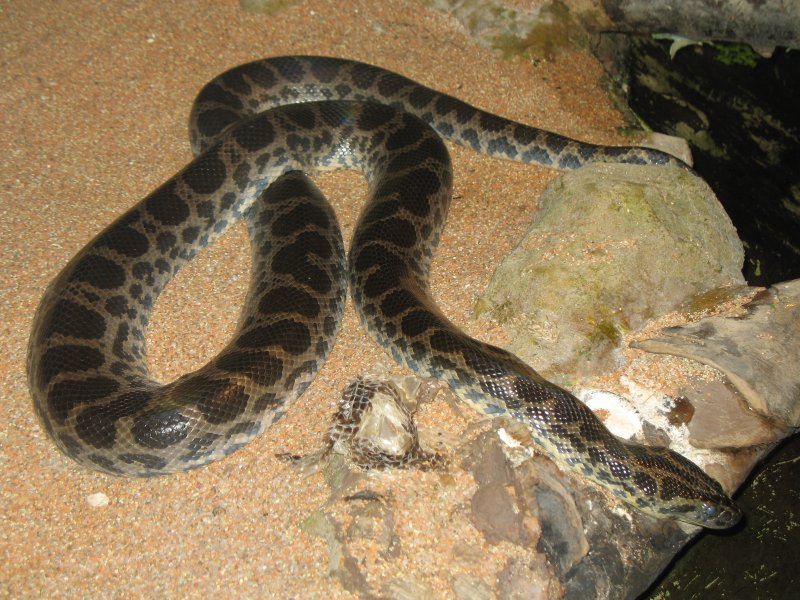 Source: wikimedia.org
Source: wikimedia.org
Anacondas are semi aquatic creatures, and are known for their grace while swimming. In fact, the name “Eunectes” is Greek for “good swimmer”! This snake is endemic to South America and has a gestation period of around nine months, averaging at around 10 young per litter. The Dark-spotted anaconda is one of four distinct varieties of anaconda that can be found in different locations.
Did you know?
-
Boa constrictor – (Boa constrictor)
Family: Boidae
Habitat: Dry, tropical land dens
Average Mass: 45 kg (99 lb)
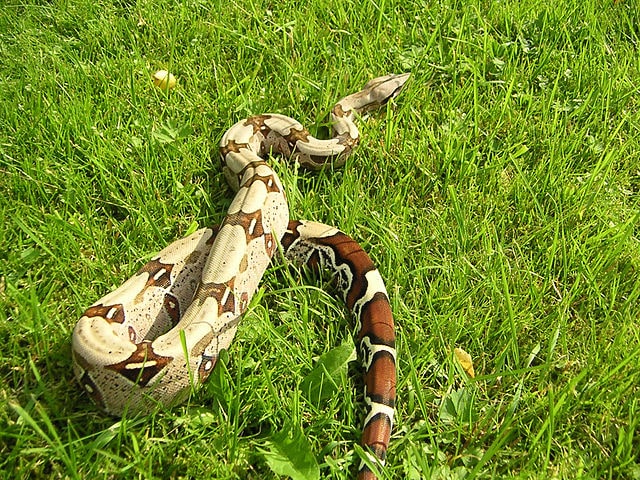 Source: wikimedia.org
Source: wikimedia.org
Boa constrictors are non-venomous and are best known for their unique hunting method of grasping their prey and then squeezing it until it suffocates. These snakes also sport distinct, saddle-shaped markings on their backs which tend to get darker and more pronounced towards the tail. The details of the patterns and the general colorations of the snakes can vary greatly.
Did you know?
Freakishly huge Boa constrictor specimens have been reported, but these were debunked as hoaxes.
-
Yellow anaconda – (Eunectes notaeus)
Family: Boidae
Habitat: Swamps and rivers
Average Mass: 40 kg (88 lb)
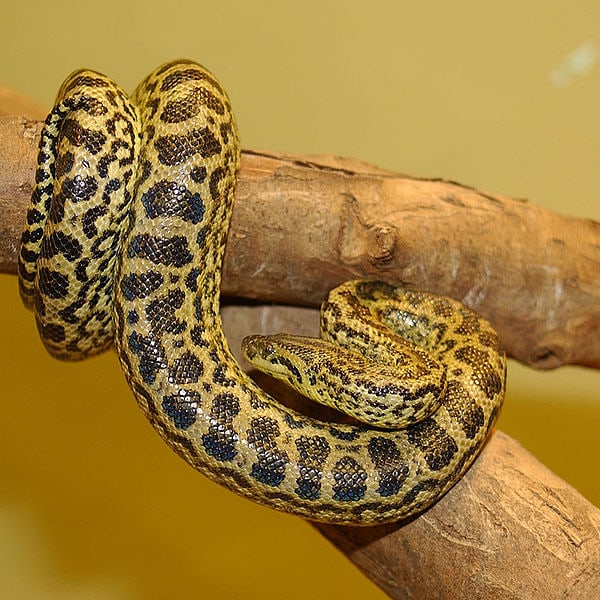 Source: wikimedia.org
Source: wikimedia.org
The Yellow anaconda is an extremely close relative of the Green anaconda, and sports a striking yellow-green color with black oval patches on its scales. The black and yellow pattern on each snake is unique to the individual and helps them to blend in with the vegetation. Yellow anacondas are great swimmers and spend most of their time in or near water, and are often called “Water boas” as a result.
Did you know?
Many people kill anacondas on site, fearing them as man-eaters, but there is no evidence to support the idea that they eat humans.
-
Cuban boa – (Chilabothrus angulifer)
Family: Boidae
Habitat: Tropical dry and scrub forests
Average Mass: 27 kg (60 lb)
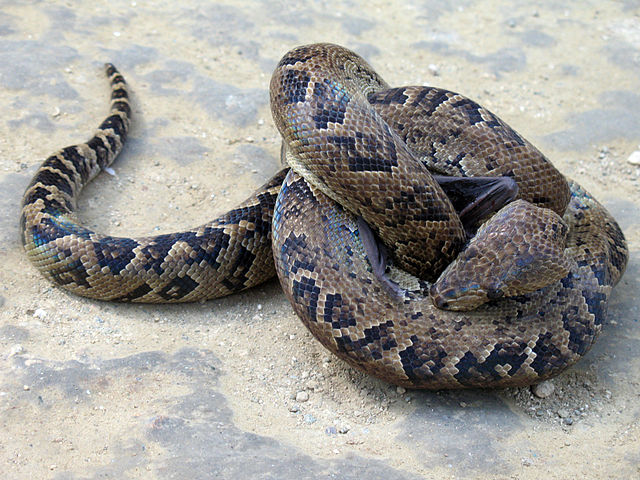 Source: wikimedia.org
Source: wikimedia.org
As its name would suggest, this snake is found in Cuba as well as surrounding islands such as the Colorados Archipelago and the Sabana-Camagüey Archipelago. Sadly, many people distrust this large snake and kill it on sight, placing its conservation status at near-threatened despite its resilience and ability to live in areas inhabited by humans. These snakes are believed to have been some of Cuba’s top predators before the arrival of humans.
Did you know?
A study featuring Cuban boas was released in May of 2017 that documented the first-ever observations of snakes hunting in packs.
-
Burmese python – (Python bivittatus)
Family: Pythonidae
Habitat: Grassy marshes and jungles
Average Mass: 182.8 kg (403 lb)
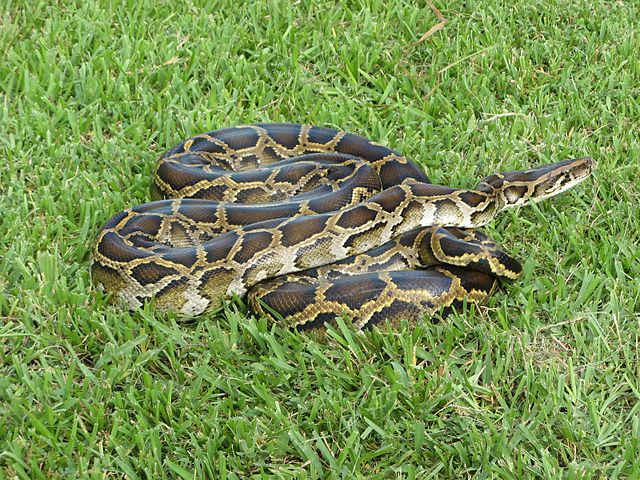 Source: wikimedia.org
Source: wikimedia.org
This snake species is native to Southeast Asia, but is frequently introduced invasively to other areas when pet owners get more than they bargained for and release them. Burmese pythons are often grabbed up as pets because of their beautiful markings, but they’ve been known to attack handlers and grow beyond what they can handle. These fascinating snakes spend much of their youth in trees, but then move to the ground as they get older and heavier.
Did you know?
The Burmese python has an especially noticeable invasive presence in the Everglades in Florida.
-
Indian python – (Python molurus)
Family: Pythonidae
Habitat: Forests, marshes, and river valleys
Average Mass: 91 kg (200 lb)
 Source: wikimedia.org
Source: wikimedia.org
The Indian python has noticeably lighter coloration than the Burmese python, and a rather timid nature. Indian pythons are also relatively slow-moving and, while they can live in a wide range of habitats, they always need a permanent source of water nearby. These pythons hunt by ambushing their prey and then constricting it, not needing another meal for weeks or even months afterwards.
Did you know?
These snakes live predominantly solitary lives, with the exception of mating season.
-
African rock python – (Python sebae)
Family: Pythonidae
Habitat: Savanna and grasslands
Average Mass: 113 kg (250 lb)
 Source: wikimedia.org
Source: wikimedia.org
African rock pythons are the largest snakes in Africa and often uses water to help camouflage themselves, resting just beneath the surface of the water while they wait to ambush their prey. When these pythons are young, they eat smaller prey such as birds and rodents. When they grow to adulthood, they’ll eat anything from warthogs and waterfowl to monkeys and crocodiles!
Did you know?
African rock pythons seek out abandoned burrows to lay 20-100 eggs in and coil around them until they hatch.
-
Amethystine (scrub) python – (Simalia amethistina)
Family: Pythonidae
Habitat: Rainforests
Average Mass: 91 kg (200 lb)
 Source: wikimedia.org
Source: wikimedia.org
Alongside its impressive length, the Amethystine python is known primarily for its stunning colors! This python is slimmer than many of its bulkier relatives, meaning that its diet is restricted to smaller animals such as fruit bats, monitor lizards, and opossums. As is the case with many large species of snake, the Amethystine python spends more time in the trees when it’s younger, eventually spending more time on the ground and in the water as it gets larger.
Did you know?
While the Amethystine python is not directly endangered as a species, its rainforest habitat is threatened by logging.
-
Green anaconda – (Eunectes murinus)
Family: Boidae
Habitat: Rainforests
Average Mass: 227 kg (500 lb)
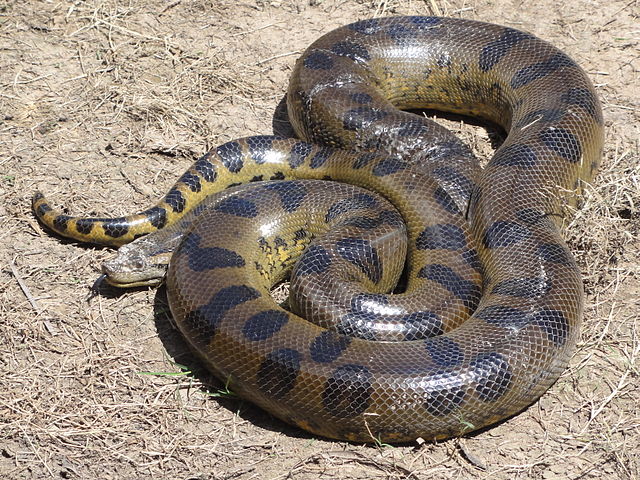 Source: wikimedia.org
Source: wikimedia.org
The green anaconda is what comes to mind when most people think of anacondas, and it is the heaviest snake on the planet! Another unusual trait of these dimorphic snakes is that the females are significantly larger than the males–and the larger the snake, the more offspring are born with each clutch of eggs. The massive green anaconda feeds on capybara, caiman, deer, and even larger animals such as jaguars!
Did you know?
The green anaconda sometimes ambushes its prey by dropping down on them from trees.
-
Reticulated python – (Malayopython reticulatus)
Family: Pythonidae
Habitat: Rainforests, woodlands, and grasslands
Average Mass: 158 kg (350 lb)
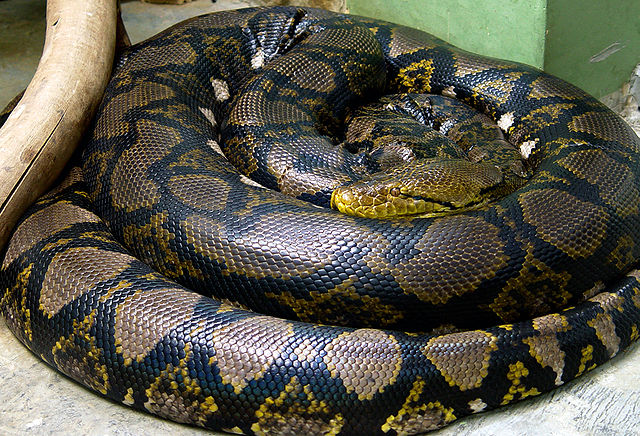 Source: wikimedia.org
Source: wikimedia.org
The reticulated python is the longest snake in the world. It is native to Southeast and South Asia, and is named after the gorgeous patterns that are displayed on its scales. Reticulated pythons used to have a reputation for being ornery and somewhat aggressive, but have since become better understood as pets. In captivity, these snakes are highly intelligent, as well as easygoing and relatively low-maintenance.
Did you know?
When its current habitat permits, reticulated pythons like to hide under brush to ambush their prey.
